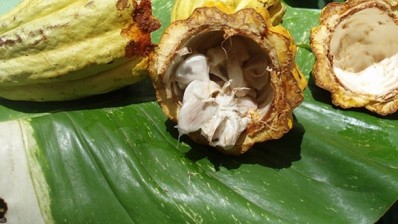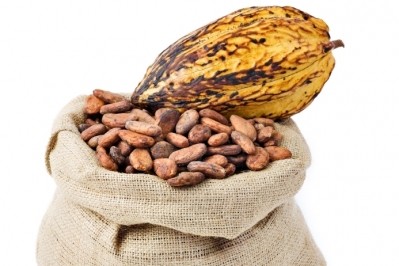Researchers claim novel method to boost polyphenol levels in cocoa products
The authors of a study, published in Food Research International, maintain that the health benefits of cocoa polyphenols as reported in recent studies have increased the interest in obtaining products from cocoa beans not only with high polyphenol, but also with a high flavan-3-ol content.
They report that the main flavan-3-ol compounds present in cocoa are the monomers catechin and epicatechin, and the dimer procyanidin B2, but during the processing of cocoa, significant degradations of these compounds take place due to fermentation and the high roasting temperatures.
“In the aerobic fermentation of cocoa, (-)-epicatechin, (+)-catechin and anthocyanidin molecules are oxidized and polymerized in the presence of the polyphenol oxydase (PPO) enzyme.
These high molecular weight polymers (tannins) have less bioavailability than their precursors,” they report.
In recent years, said the researchers, studies have focused on ways to mitigate or suspend the PPO enzyme activity in cocoa in order to avoid polyphenol oxidation reactions and polymerization.
And they said the objective of their research thus was the study of the antioxidant capacity and the flavan-3-ol content of polyphenol-rich cocoa products obtained through an unconventional cocoa processing technique.
Method
They said that fresh cocoa pods from the Quevedo region in Ecuador were purchased, with the fresh pulp removed manually from the pods in situ. Batches of 136 kg of depulped beans were thermally treated with water vapour at an internal bean temperature of 95ºC for five minutes by immersing the beans in 2,500 litres of water to inactivate the enzyme PPO.
The beans were then dried at a controlled temperature of 45ºC until a moisture content of seven per cent was reached. The dried beans were cleaned and deshelled with the aid of aspiration to obtain the nibs, which were then partially defatted through physical pressing at a temperature of 55 ºC, said the team.
Upon completion of this process, a natural polyphenol-rich cocoa cake with a butter content of 12 per cent was obtained. The polyphenol-rich cocoa cake was then used as a raw material to obtain a cocoa powder (sample A) and two polyphenol-rich cocoa extracts (samples B and C), they added.
The authors said that for the cocoa powder production, the cake was thermally treated in an autoclave with a saturated flash steam at 121 ºC for one minute. After the heat treatment, the cake was milled and sieved to obtain a cocoa powder they referred to as sample A.
In a small trial, they added, the defatted cocoa cake obtained in the industrial process was extracted by means of a solid-liquid extraction process with a hydro-alcoholic mixture consisting of 70 per cent ethanol. The cocoa cake was extracted at 70 ºC for two hours under mechanical stirring, the solid was filtered, and the liquid fraction was recovered.
This fraction was then distilled under reduced pressure to remove the solvent, affording an aqueous extract. After drying the liquid extract, a polyphenol-rich cocoa extract was obtained to give sample B.
The remaining liquid aqueous extract was then subjected to an additional purification step, said the authors, consisting of a liquid-liquid extraction with ethyl acetate at a temperature of 50 ºC.
The aqueous and organic fractions were separated by means of decantation and the organic phase was recovered. After distillation to remove the organic solvent, the product was dried to obtain a purified cocoa extract deemed as sample C.
“Sample A was thus a natural polyphenol-rich cocoa powder while samples B and C were polyphenol-rich cocoa extracts obtained from the natural-rich cocoa cake, with sample C resulting from a purification of sample B. This procedure was expanded to an industrial scale to obtain a range of cocoa products,” added the researchers.
Findings
They said that their results showed that total polyphenols and flavanols quantified in the cocoa powder rich in polyphenols (sample A) were much higher than the control cocoa powder, but similar to those found in another previously reported cocoa polyphenol (Cienfuegos-Jovellanos et al., 2009).
Furthermore, after the extraction process, the cocoa extract (sample B) contained three times more epicatechin and five times more procyanidin B2 than its respective control, they found.
And they said the purification step resulted in a concentration of epicatechin monomer of 300 mg/g, and the researchers added that the heat treatment of 121 ºC for one minute did not result in any loss of total monomers and dimers.
“The results confirm that the wet heat treatment produces polyphenol-rich cocoa powder that meets the microbiological standards for its commercialization without altering the phenolic composition,” said the authors.
Source: Food Research International
Published online ahead of print
Title: Antioxidant properties of polyphenol-rich cocoa products industrially processed
Authors: G. Schinella, S. Mosca, E. Cienfuegos-Jovellanos, M.Ángeles Pasamar, B. Mugerza, D. Ramón, J. Luis Ríos












